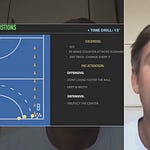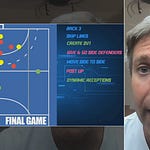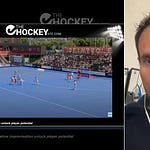If you’re looking to sharpen your defensive acumen and stay ahead of tactical trends, you won’t want to miss what went down in our latest masterclass with Fede Tanuscio from Argentina. Fede is a familiar face in these sessions (and for good reason!), and this time he took us deep into the world of the low zonal block — probably the most polarizing system in today’s field hockey.
Some love it for its tactical sophistication and miserly defense, others grumble about its conservative nature. As Fede put it, “It’s a very dilemma system about the people who like offensive and more open games and people who really like to defend.” But make no mistake: coached right, the low zonal block is a defensive brick wall that’s defining elite matches.
Here’s what Tanuscio unpacked in the session:
1. The Essence of the Low Zonal Block
Fede kicked things off by pinning down a working definition: the system forms a compact, zonal wall in your own quarter, stifling space, protecting the scoring area, and corralling opponents into mistakes. Think less chasing, more strategic suffocation:
“Play in a low system, run less, don’t have space for other team and insist the other team make mistakes.”
2. Formation & Structural Variations
The standard approach? Start with a back four, three zonal strikers and four mids with clear responsibilities — side mids on sidebacks, center mids on interceptions. But the beauty (and challenge) is in adaptability: structure shifts subtly when facing back three vs. back four offenses, demanding razor-sharp player awareness and coordination.
3. Key Principles: Compactness, Zonal Integrity, Patience, and Cover Lines
Fede drilled into four core tenets:
Compactness: Defensive and midfield lines tight together, always ready for chaos management in the D.
Stay Zonal (Not Man-to-Man): “If you do man to man, it’s very easy to manipulate the system.”
Patience: Wait for errors; “At one point the other team will get frustrated... then you recover the ball.”
Constant Line Coverage: Backs and mids always have each other’s covering lines, particularly as possession shifts.
4. Role Clarity by Line
Every group’s jobs were clear: defenders manage depth and mobility, mids focus on interception and lateral pressure, strikers shield the center. Fede’s clips repeatedly showed defenders sprinting out from the D to smother top-corner entries — a recurring theme for proactive block play.
5. Strengths — Why Bother?
When coached right, it’s hellishly hard to get quality entries or circle penetrations, especially with flicks, crash balls, or overheads. “Less possibility for crash balls, less time to cross the ball, less time to make a decision.”
6. Weaknesses and Vulnerabilities
Nothing’s perfect! The block needs top-corner vigilance; slow support or poor coverage exposes dangerous flicks and tip-ins. High concentration is non-negotiable, as mistimed positioning (too early or too late) makes the block leaky and beatable.
7. Coaching Mistakes and How to Fix Them
Common errors included poor line coverage, lack of communication, and over-complication from coaches. Fede reminded us: “Even at international level — keep it simple, stupid!”
8. Training Methods for All Levels
Don’t have a squad of internationals? No excuses! Core drills (e.g., mini-games for zonal awareness, small-sided press coverage) scale down beautifully to youth and amateur setups. Tailor for the age, emphasize communication, and build complexity gradually.
Session in a Nutshell:
This was a tactical deep dive for real practitioners: lots of boardwork, video breakdowns, open debate in the chat, and the kind of detail you only get from someone who loves the grind of defense as much as Fede. If your club or national team is still picking its defensive poison, or you keep bumping into low blocks that frustrate your forwards, these principles are essential.
Want more?
The full masterclass is now available on demand! Hit the link below for real-game video examples, practical session designs, and a lively Q&A full of actionable detail.
Already a paid up subscriber? Read on for more of a deep dive from this masterclass. Or (re)watch the full video on demand above of course…
Let’s dissect the session’s essential points, highlight standout moments from the lively Q&A, and filter the theory into actionable insight you can take back to your squad—whether you’re already using zonal principles or starting to explore new options.
Listen to this episode with a 7-day free trial
Subscribe to The Hockey Site to listen to this post and get 7 days of free access to the full post archives.













